Summit Zer0, 2022
Meta-Tool: Resistance and Tacticality
“From its beginning, the artwork is handled in a way that enables it to survive culture. While one often speaks about artwork as a commodity, it is not a normal commodity. The normal commodity is made to be consumed—in other words, to be destroyed (eaten as bread, used as a car). So, in a certain sense, art is an anti-commodity. It is put under the condition of conservation—prevented from being destroyed by time and by use. And this is the essential characteristic of art: it survives its original culture, taking a long journey through all the other, later cultures. It remains at the same time foreign to these other cultures—an alien in their midst, carrying with it the knowledge of its past.”
The Museum as a Cradle of Revolution, Boris Groys
The word “Meta-tool” derives from Groys’ definition of art objects as something essentially different than commodities. Meta-tool is an ontological status that an object retains when its condition as a commodity shifts. The shift by which the made-to-be-consumed-commodity turns into an immortal object in the sense that it can outlive its original culture and context.
Questioning aesthetics and asking whether or not there is an essence to an art object is not a brand-new question in the realm of art. Following OOO’s realist approach to arts, aesthetics is not “in the eyes of the beholder” but rather something out there which withdraws from any direct relation.
Speakers:
Night 1, May 16th
Born in 1963 in Paris (France), ZINEB SEDIRA lives in London (United Kingdom) and works between Algiers (Algeria), Paris and London. Over the fifteen years of her practice, Sedira has enriched the debate around the concepts of modernism, modernity and its manifestations in an inclusive way. She has also raised awareness of artistic expression and the contemporary experience in North Africa. She found inspiration initially in researching her identity as a woman with a singular personal geography. From these autobiographical concerns, she gradually shifted her interest to more universal ideas of mobility, memory and transmission. Kamel Mennour and Zineb Sedira have been working together since 2006.
Zineb Sedira’s work was shown in several solo exhibitions at the Jeu de Paume (Paris, 2019), the IVAM‑Institut Valencià d’Art Modern (Spain, 2019), the Beirut Art Center (Lebanon, 2018), the Sharjah Art Foundation Art Spaces (UAE, 2018), the Art On the Underground (London, 2016), the Blaffer Art Museum (Houston, 2013), the Charles H. Scott Gallery (Vancouver, 2013), the Prefix‑Institute of Contemporary Art (Toronto, 2010), the [mac] musée d’Art contemporain of Marseille (2010), the Palais de Tokyo (Paris, 2010), the Kunsthalle Nikolaj (Copenhagen, 2010), the BildMuseets (Sweden, 2010), the Pori Art Museum (Finland, 2009), the New Art Exchange (Nottingham, 2009), the Wapping Project (London, 2008) and at the Photographer’s Gallery (London, 2006). Her work will soon be exhibited at the Bildmuseet (Umeå, Sweden, 2021), the SMoCA (Scottsdale Museum of Contemporary Art) (US, 2021), the De La Warr Pavilion (Bexhill on Sea, UK, 2021-2022), and at the Calouste Gulbenkian Museum (Lisbon, 2022).
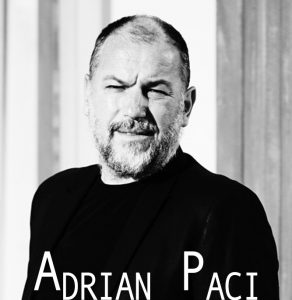
Night 2, May 17th
“Adrian Paci was born in Shkodër, Albania, in 1969. From 1987 to 1991 he attended the Akademia e Arteve in Tirana, Albania. He lectured in art history and aesthetics in Shkodër from 1995 until 1997, at which time he left his home country for Milan, escaping the violence of the armed uprising that roiled Albania that year. Paci’s position as an exile holds a central place in his oeuvre. His work frequently addresses themes of geographical separation, nostalgia, and memory, and conveys a keen sense of the mutability of life and art.
Paci is known primarily for his work in performance and video, although he explores similar subjects in painting, photography, and sculpture. Characterized by a fluid interplay between performance and body art, his videos frequently focus on quotidian existence and feature members of his own family. In the video piece Apparizione (2001), for example, Paci’s daughter sings an Albanian song on one screen, while her relatives in Albania complete the unfinished verses on another. Though physically separated in life and in art, the family becomes unified through tradition and a shared language. In several of his videos, Paci uses his body to create poignant statements about loss—whether by crawling across the floor with a roof tied to his back (Home to Go, 2001) or by staging his own funeral with the help of a professional mourner (In Vajtojca, 2002). While his work centers on his own identity and personal history, it nevertheless actively engages its audience, challenging viewers’ limited perceptions of reality.
In 1999 Paci was among the first Albanian artists to represent their country at the Venice Biennale. In 2004 he was a resident artist at Apexart in New York. His first major solo exhibition took place the following year at MoMA PS1 in New York. That same year, he had a solo exhibition at the Moderna Museet in Stockholm and his work was featured again at the Venice Biennale. In 2009 his work appeared in the group exhibition The Storytellers at the Museum Folkwang in Essen, Germany. Since 2003 he has been a lecturer in visual arts at the Accademia Carrara di Belle Arti in Bergamo and the Università IUAV in Venice. Paci currently resides and works in Milan.”
Night 3, May 18th
Born in Germiston (South Africa) and into a working-class Afrikaans family during the height of Apartheid, Kendell Geers quickly found himself fighting a Crime Against Humanity on the front lines of activism and protest. From his strong experiences as a revolutionary, he developed a psycho-social-political practice that held ethics and aesthetics to be opposite sides of the very same coin, spinning upon the tables of history. In his hands, the discourse of art history is interrogated, languages of power and ideological codes subverted, expectations smashed and belief systems transformed into aesthetic codes.
Describing himself as an AniMystikAktivist, Kendell Geers’ work embodies a syncretic approach that weaves together diverse Afro-European traditions from Animism and Activism, to Alchemy, Mysticism and Ritual Magick. His strategies are without compromise because he believes that “Art changes the world – one perception at a time.” Geers has shown his work worldwide. Recent exhibitions at La Cité International des Arts, Paris, Kunstmuseum Wolfsburg, Lambert Collection (Avignon), MAXXI Museum. He is currently showing his work at Planet B: Climate Change and the New Sublime, Palazzo Bollani in Venice. Recent solo shows at Carpenters Workshop Gallery, Paris (2022), Capital C, Amsterdam (2021), Institut Supérieur Des Beaux Arts, Besançon, M77 Gallery, Milan (2020)
Night 4, May 19th
Per Hüttner (b. 1967) is a Swedish artist who lives and works in Stockholm and Paris. He was trained at Konsthögskolan, Stockholm and at Hochschule der Künste in Berlin. He has shown his work extensively in Europe, Australia, Asia, North and South America. Solo exhibitions and major presentations include Zendai Contemporary in Shanghai, Göteborgs konstmuseum and Wellcome Collection in London. Participation in group shows include Museu de Arte Moderna de São Paulo (MAM); Palais de Tokyo in Paris, the Hayward Gallery in London, Moderna Museet in Stockholm, MACBA in Barcelona. He has performed at Tate Britain, Tate Modern, Pinacoteca, Museo Jumex and the Venice Biennial. He is represented at art museums in Sweden, Poland, China and Brazil. Hüttner is the founder and director of the international research network Vision Forum and a member of the performance collective 1+1=3 where he has been part of developing the EEGsynth a tool to use brain activity in performance art.
Hüttner’s performance work investigates impermanence as a global principle, especially how ideas of permanence and purity are used to perpetuate social, political and economical structures and how that influences human communication and interaction.The work often deals with transformation, change or various forms of transgressions of boundaries or borders.
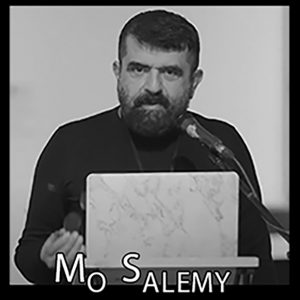
Night 5, May 20th
Mohammad Salemy is an independent Berlin-based artist, critic and curator from Canada. He holds a BFA from Emily Carr University and an MA in Critical Curatorial Studies from the University of British Columbia. He has shown his works in Ashkal Alwan’s Home Works 7 (Beirut, 2015), Witte de With (Rotterdam, 2015) and Robot Love (Eindhoven, 2018). His writings have been published in e-flux, Flash Art, Third Rail, Brooklyn Rail, Ocula, Arts of the Working Class and Spike. Salemy’s curatorial experiment For Machine Use Only was included in the 11th edition of Gwangju Biennale (2016). Together with a changing cast, he forms the artist collective Alphabet Collection. Salemy is the Organizer at The New Centre for Research & Practice. He has been the cofounding Organizer of The New Centre since 2014.
Night 6, May 21st
Humberto Vélez was born in 1965 in Panama. He works and lives between Manchester (UK) and Panama. Vélez’s performances, films, and installations actively explore the possibilities of working in collaboration with different people (artists and artisans, local communities, First Nation people, asylum and refugees, women groups, animal keepers, animal care workers or trainers, athletes, musicians, etc., and groups specifically assembled for the project) in different countries and cultures. His artworks are conceived by what he calls “the ability to create aesthetics” for and with these groups, according to their lifestyles and circumstances, thereby managing different concepts and expressions of popular culture, power, and especially, ethics. The human relations on whom Vélez constructs his creative processes are as important as the outcome, be that a performance, a film, an installation, or a photographic memoir. For that, Vélez calls his practice “Aesthetics of Collaboration. Humberto Vélez has a Law and Political Sciences degree from the University of Panama. He also studied Filmmaking and TV in the International School of Cinema of San Antonio de Los Baños, Cuba. He has had solo performance shows at the TATE Modern in London, Centre Pompidou in Paris and the Art Gallery of Ontario (AGO), among others, and participated in international art events, such as the Venice (2013 and 2015), Havana (2004, 2012 and 2015), Shanghai, Montevideo (2012 and 2014), Ireland and Liverpool Biennials, among others, and in many group shows.He works as an artist, art professor, independent filmmaker, and art producer. In 2011 he founded VISITING MINDS (with Panamanian curator and art critic Adrienne Samos), an international forum based in Panama, devoted to art and education.
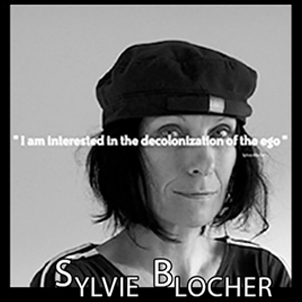
Night 7, May 22nd
Sylvie Blocher is an artist based in Saint-Denis, France. After her manifesto “Disappointed, the bride got herself dressed again” (1991), in response to the violence and amnesia of part of modernity, she launched the concept “I we are”, which attempts to deconstruct authoritarian modernity from the angle of otherness, and to oppose to the mechanisms of social and affective controls a practice of “decolonization of the self”.In 1993 she began the process “Universal Local Art” with her video series called the « Living Pictures ».Since then, her filming work has been based on human material, fragile and unpredictable, but endowed with an extreme presence, which forces her to confront ethics and aesthetics. The participants met from all over the world are invited to share the authority of the artist.Dealing with the imagination of others, her work commits itself to “a poetics of relation”, advocating another distribution of places and voices in contemporary society. To do so, she questions identities and gender, post-colonialism, and codes of representation in a global world where Otherness is “wounded”. In parallel in 1997, she co-founded the architectural action group Campement Urbain with the architect and urban planner François Daune. The group received in 2008 the international prize “Art, community, collaboration”, from Evens Foundation, and in 2012 the Australia Award for Urban Design where Campement Urbain redesigned the master plan for the Western Australian city of Penrith based on the narratives of its inhabitants. Blocher’s work has been presented in numerous museums, biennials, and festivals worldwide. She has had major solo exhibitions at SFMOMA (San Fransisco), Mudam (Luxemburg), CRAC (Sète), and MCA (Sydney). Blocher has participated in many important exhibitions such as the Venice Biennial (2003), Liverpool Biennial (2012), the Guangzhou Triennial (2005), Salvador de Bahia Biennial in Brazil (2014) and Douala (2017)
Curators:
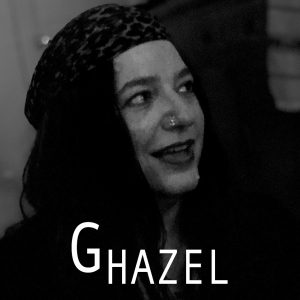
Ghazel was born in 1966 in Tehran.
Ghazel received her B.F.A. and M.F.A. from L’Ecole Supérieure des Beaux Arts in Nîmes (France). She also received a B.A. in Film Studies from Paul Valéry University in Montpellier.
In her work, Ghazel has obsessively questioned contemporary migrations, belonging, hybridity, social issues and the effects of War. Her work is always directly inspired by her multiple imperfect identities and the social work that she has been doing since the mid 90s with delinquent youngsters, street children, migrants and asylum seekers. She believes that Art can only be a strategy of resistance.
She has participated in many international biennials, including the 50th International Exhibition Venice Biennial (Clandestini) in 2003, the 8th Havana Biennial (El Arte con la vida) in 2003, the 3rd Tirana Biennial (Sweet Taboos, Episode 2: To lose without being a Loser) in 2005, the 15th Biennale of Sydney (Zones of Contact) in 2006, the 7th Sharjah Biennial (Belonging) in 2005, the XIV Woman Biennial in Ferrara ( Veiled Memoirs: Contemporary Art from Iran) in 2010 and the 13th Havanna Biennial (Construction of the Possible) in 2019.
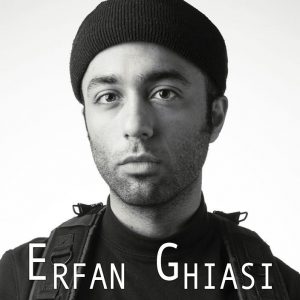
Born in 1989, Erfan Ghiasi is a Tactical Media Specialist, curator, researcher, and translator currently living in Tehran. In his projects he tackles socio-political issues by intersecting documentary photography, performance, installation, and socially engaged art to bring to light the hidden and withdrawn aspects of reality. In his research, Ghiasi creates new connections between the metaphysics of Object-oriented Ontology and various fields including social theory and aesthetics.
He also has curated projects such as Within the Finitude (Pejman Foundation 2020) and disclosure (Louisiana State University 2018). Solo shows and projects including: Man-made Objects (Iran 2021), Slaughter (Iran 2020), Abject Object (USA 2019), and Sacred Man (USA 2018).